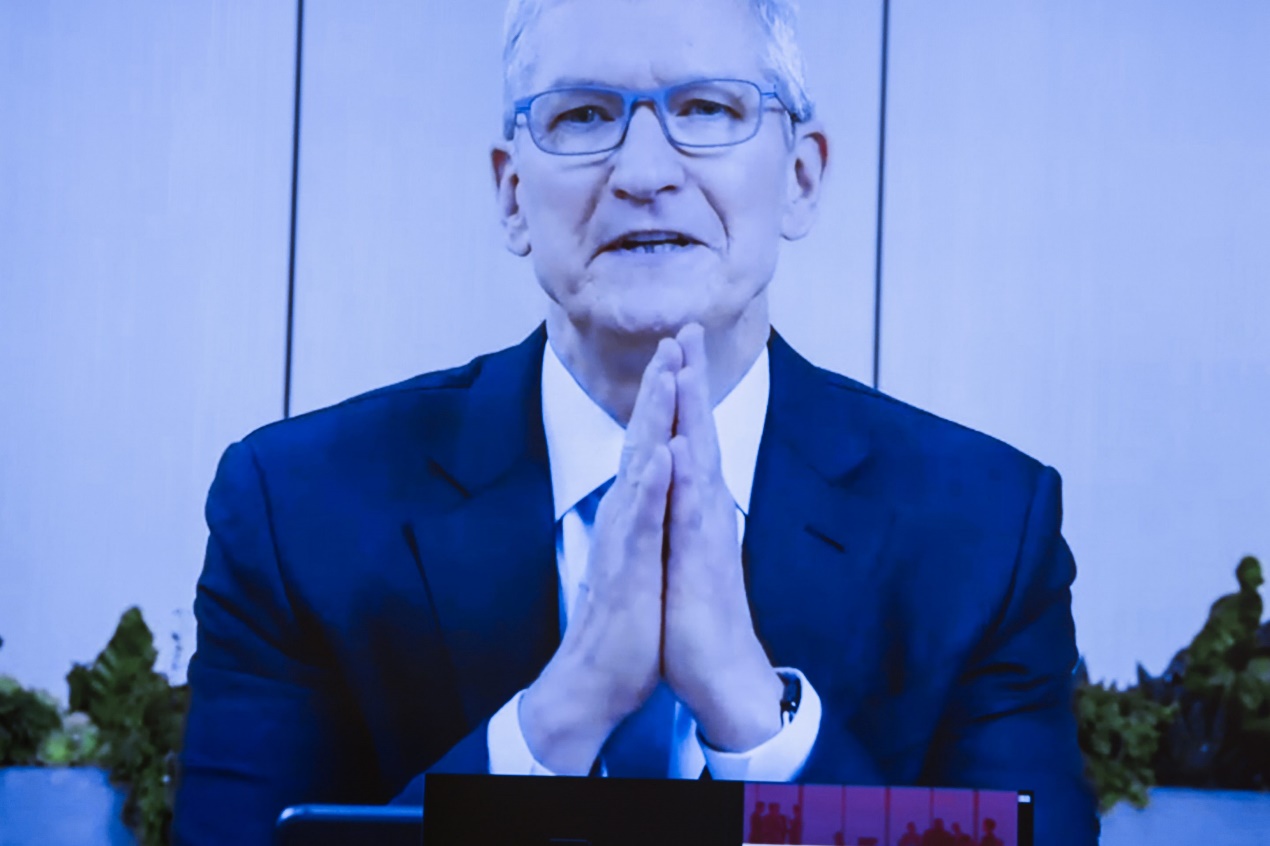
由于遭到员工的强烈抵制并使得离职潮频发,谷歌(Google)最近取消了让所有员工都恢复线下坐班的计划,并允许很多员工继续远程工作。而苹果(Apple)近期强制要求员工线下坐班的计划已经导致多人离职,并在该公司内部激起了强烈反对。
为什么这么多大公司的领导一定要员工返回办公室坐班?自2021年早春开始,一系列广泛而深入的调查研究了数千名员工对新冠肺炎疫情之后恢复线下坐班的偏好——它们的结果值得关注。
所有的调查结果都显示,超过四分之三的受访者都强烈希望在后疫情时代继续居家办公——至少有一半的时间能够居家办公。四分之一到三分之一的受访者希望可以永久、全线远程工作。40%到55%的受访者表示,如果不能保证一周至少有一半的时间可以完全线上工作,他们就会辞职;还有许多人表示,如果不能完全远程工作,他们也会辞职。少数族裔员工对远程办公表现出了尤其强烈的偏好,以规避办公室内的歧视。
然而,许多雇主却打算强制要求员工在一周中的大部分时间回到办公室,或者完全恢复线下坐班,而这些员工本来可以轻松地在家远程工作。
领导常说,“人”是他们最重要的资源。然而,不允许远程办公的领导并没有遵循这一原则。相反,他们只顾让自己舒服,即便这会破坏员工的士气、敬业程度和生产力;严重削弱留职率和新入职率;并损害多样性和包容性。而他们的行为最终会成为企业命脉的严重威胁。
就这一问题,我采访了12家公司的61位中高层领导,我曾经协助他们制定让员工恢复线下坐班的战略,并开始理解为什么一个看起来显而易见的最优选——给大部分人提供“线上+线下”的混合模式,再满足那些想要完全线上办公、并能够保持高效率和高生产力的员工意愿——却会被领导们拒绝。
这是因为领导们存在一系列的认知偏见——会导致错误的战略和财务决策的心理盲点。幸运的是,通过了解这些认知偏差,并基于研究结果、按部就班地采取措施解决它们,我们就可以做出最佳决策。
很多人都渴望回到疫情爆发之前的世界。他们陷入了一种“现状偏见”,渴望维持或回到他们所认为的合适的境况与行事方式。
领导们希望每个人都回到办公室的一个主要原因是,他们会对在家工作的人感到不爽。他们自己的职业生涯就是在被其他员工包围的环境中度过的。他们希望恢复定期坐班,让员工能够被周围同事的工作能量感染。
他们落入的是一种“锚定偏见”。这种心理盲点会让我们感到自己被最初的经验和信息束缚。
绝大多数员工在居家办公时也表现良好,这一证据并没有使领导们的观点有多大改观——“确认偏误”可以很好地解释这种看似不合理的现象。我们的大脑擅长忽略与我们坚信的东西相矛盾的信息,而只会寻求那些强化我们既定信念的信息。
不太配合调查的领导者通常告诉我,他们“不用接受调查”,因为他们很自信地觉得,大多数员工会宁愿在办公室而不是在家工作,而对于大规模公共调查显示出的相反事实,他们也不屑一顾。例如,苹果员工的一大怨言就是该公司从未进行过有效的调查并听取员工的意见。
这种拒绝调查的态度不仅体现了“确认偏误”,其中还夹杂了另一种认知偏差——“错误共识效应”。这种心理盲点会让我们高估,团队中的其他人(例如公司员工)和我们所见略同,而实际情况并非如此。
一些不愿意实行远程办公的领导提出了其中的问题,包括员工会倦怠、甚而会恶化办公文化。但对每个问题的进一步调查都显示,领导从未提出过能够解决好这些居家办公问题的战略。
2020 年 3 月,美国出台封禁措施,人们猝不及防地转向线上办公也是其中的一部分要求。大家都将这种转变视为非常短暂的紧急情况,自然而然、合情合理地专注于完成组织交给的必要任务。但他们忽视了真正将公司凝聚在一起、激励员工并防止倦怠的,是社会性和情感性的粘合剂。
这反映了一种被称为“功能固着”的认知偏差。当我们对一个系统应该如何运转已经有一定的认识时,就会忽略其他可能的功能、用途和行为。即使当情况发生了变化,这些新的功能、用途和行为更适合新形势,并可以更好地解决问题,我们还是会倾向于认定那些先前的功用。
疫情之后,人们将需要重塑对职场中雇主-雇员关系的期望。领导们要用有科学研究依据的策略,避免一些会让他们陷入认知偏差的下意识反应。只有这样,他们才能够最大限度地留住老员工,招到新员工,提振士气、生产力和职场文化——从而最大限度地守住企业的命脉。(财富中文网)
本文作者格莱布•齐普尔斯基(Gleb Tsipursky)是一位行为科学家、也是咨询公司Disaster Avoidance Experts的首席执行官,著有《重返办公室与混合/远程办公团队领导法:比较优势的最佳实践标准手册》(Returning to the Office and Leading Hybrid and Remote Teams: A Manual on Benchmarking to Best Practices for Competitive Advantage)。
编译:陈聪聪
由于遭到员工的强烈抵制并使得离职潮频发,谷歌(Google)最近取消了让所有员工都恢复线下坐班的计划,并允许很多员工继续远程工作。而苹果(Apple)近期强制要求员工线下坐班的计划已经导致多人离职,并在该公司内部激起了强烈反对。
为什么这么多大公司的领导一定要员工返回办公室坐班?自2021年早春开始,一系列广泛而深入的调查研究了数千名员工对新冠肺炎疫情之后恢复线下坐班的偏好——它们的结果值得关注。
所有的调查结果都显示,超过四分之三的受访者都强烈希望在后疫情时代继续居家办公——至少有一半的时间能够居家办公。四分之一到三分之一的受访者希望可以永久、全线远程工作。40%到55%的受访者表示,如果不能保证一周至少有一半的时间可以完全线上工作,他们就会辞职;还有许多人表示,如果不能完全远程工作,他们也会辞职。少数族裔员工对远程办公表现出了尤其强烈的偏好,以规避办公室内的歧视。
然而,许多雇主却打算强制要求员工在一周中的大部分时间回到办公室,或者完全恢复线下坐班,而这些员工本来可以轻松地在家远程工作。
领导常说,“人”是他们最重要的资源。然而,不允许远程办公的领导并没有遵循这一原则。相反,他们只顾让自己舒服,即便这会破坏员工的士气、敬业程度和生产力;严重削弱留职率和新入职率;并损害多样性和包容性。而他们的行为最终会成为企业命脉的严重威胁。
就这一问题,我采访了12家公司的61位中高层领导,我曾经协助他们制定让员工恢复线下坐班的战略,并开始理解为什么一个看起来显而易见的最优选——给大部分人提供“线上+线下”的混合模式,再满足那些想要完全线上办公、并能够保持高效率和高生产力的员工意愿——却会被领导们拒绝。
这是因为领导们存在一系列的认知偏见——会导致错误的战略和财务决策的心理盲点。幸运的是,通过了解这些认知偏差,并基于研究结果、按部就班地采取措施解决它们,我们就可以做出最佳决策。
很多人都渴望回到疫情爆发之前的世界。他们陷入了一种“现状偏见”,渴望维持或回到他们所认为的合适的境况与行事方式。
领导们希望每个人都回到办公室的一个主要原因是,他们会对在家工作的人感到不爽。他们自己的职业生涯就是在被其他员工包围的环境中度过的。他们希望恢复定期坐班,让员工能够被周围同事的工作能量感染。
他们落入的是一种“锚定偏见”。这种心理盲点会让我们感到自己被最初的经验和信息束缚。
绝大多数员工在居家办公时也表现良好,这一证据并没有使领导们的观点有多大改观——“确认偏误”可以很好地解释这种看似不合理的现象。我们的大脑擅长忽略与我们坚信的东西相矛盾的信息,而只会寻求那些强化我们既定信念的信息。
不太配合调查的领导者通常告诉我,他们“不用接受调查”,因为他们很自信地觉得,大多数员工会宁愿在办公室而不是在家工作,而对于大规模公共调查显示出的相反事实,他们也不屑一顾。例如,苹果员工的一大怨言就是该公司从未进行过有效的调查并听取员工的意见。
这种拒绝调查的态度不仅体现了“确认偏误”,其中还夹杂了另一种认知偏差——“错误共识效应”。这种心理盲点会让我们高估,团队中的其他人(例如公司员工)和我们所见略同,而实际情况并非如此。
一些不愿意实行远程办公的领导提出了其中的问题,包括员工会倦怠、甚而会恶化办公文化。但对每个问题的进一步调查都显示,领导从未提出过能够解决好这些居家办公问题的战略。
2020 年 3 月,美国出台封禁措施,人们猝不及防地转向线上办公也是其中的一部分要求。大家都将这种转变视为非常短暂的紧急情况,自然而然、合情合理地专注于完成组织交给的必要任务。但他们忽视了真正将公司凝聚在一起、激励员工并防止倦怠的,是社会性和情感性的粘合剂。
这反映了一种被称为“功能固着”的认知偏差。当我们对一个系统应该如何运转已经有一定的认识时,就会忽略其他可能的功能、用途和行为。即使当情况发生了变化,这些新的功能、用途和行为更适合新形势,并可以更好地解决问题,我们还是会倾向于认定那些先前的功用。
疫情之后,人们将需要重塑对职场中雇主-雇员关系的期望。领导们要用有科学研究依据的策略,避免一些会让他们陷入认知偏差的下意识反应。只有这样,他们才能够最大限度地留住老员工,招到新员工,提振士气、生产力和职场文化——从而最大限度地守住企业的命脉。(财富中文网)
本文作者格莱布•齐普尔斯基(Gleb Tsipursky)是一位行为科学家、也是咨询公司Disaster Avoidance Experts的首席执行官,著有《重返办公室与混合/远程办公团队领导法:比较优势的最佳实践标准手册》(Returning to the Office and Leading Hybrid and Remote Teams: A Manual on Benchmarking to Best Practices for Competitive Advantage)。
编译:陈聪聪
Because of strong employee resistance and turnover, Google recently backtracked from its plan to make all employees return to the office and allowed many to work remotely. Apple’s plan to force its staff back to the office has caused many to leave the company and led to substantial internal opposition.
Why are these and so many other leaders of major companies compelling employees to return to the office? They must know about the extensive, in-depth surveys from early spring 2021 that asked thousands of employees about their preferences on returning to the office after the pandemic.
All of the surveys revealed strong preferences for working from home post-pandemic at least half the time for over three-quarters of all respondents. A quarter to a third of all respondents desired full-time remote work permanently. Between 40% and 55% of respondents said they’d quit without permanent remote options for at least half the workweek; of these, many would leave if not permitted fully remote work. Minority employees expressed an especially strong preference for remote work to escape in-office discrimination.
Yet many employers intend to force their employees who can easily work remotely back to the office for much or all of the work week.
Leaders frequently proclaim that people are their most important resource. Yet the leaders resistant to permitting telework are not living by that principle. Instead, they’re doing what they feel comfortable with, even if it devastates employee morale, engagement, and productivity; seriously undercuts retention and recruitment; and harms diversity and inclusion. In the end, their behavior is a major threat to the bottom line.
Interviewing 61 mid-level and senior leaders on this question in 12 companies that I helped develop a strategic approach to transitioning back to the office, I came to understand why they’re resistant to the seemingly obvious best option: a hybrid model for most, with full-time permanent remote work for those who both want it and show high effectiveness and productivity.
This is because of cognitive biases, which are mental blind spots that lead to poor strategic and financial decision-making. Fortunately, by understanding these cognitive biases and taking research-based steps to address them, we can make the best decisions.
Many people feel a desire to go back to the world before the pandemic. They fall for status quo bias, a desire to maintain or get back to what they see as the appropriate situation and way of doing things.
A major factor in leaders wanting everyone to return to the office stems from their personal discomfort with work from home. They spent their career surrounded by other people. They want to resume regularly walking the floors, surrounded by the energy of staff working.
They’re falling for anchoring bias. This mental blind spot causes us to feel anchored to our initial experiences and information.
The evidence that work from home functions well for the vast majority doesn’t cause them to shift their perspective in any significant manner. Confirmation bias offers an important explanation for this seeming incongruity. Our minds are skilled at ignoring information that contradicts our beliefs, and looking only for information that confirms them.
Reluctant leaders usually tell me they don’t want to do surveys because they feel confident that the large majority of their employees would rather work at the office than at home. They wave aside the fact that large-scale public surveys show the opposite. For instance, one of the major complaints by Apple employees is the company’s failure to do effective surveys and listen to employees.
In this refusal to do surveys, confirmation bias is compounded by another cognitive bias called the false consensus effect. This mental blind spot leads us to envision other people in our in-group—such as those employed at our company—as being much more like ourselves in their beliefs than is the actual case.
Some of these resistant leaders brought up challenges related to working from home, ranging from burnout to deteriorating culture. But further inquiry on each problem reveals that the leaders never addressed these work-from-home problems strategically.
They transitioned to telework abruptly as part of the March 2020 lockdowns. Perceiving this shift as a very brief emergency, they focused, naturally and appropriately, on accomplishing the necessary tasks of the organization. They ignored the social and emotional glue that truly holds companies together, motivates employees, and protects against burnout.
That speaks to a cognitive bias called functional fixedness. When we have a certain perception of how systems should work, we ignore other possible functions, uses, and behaviors. We do this even if these new functions, uses, and behaviors offer a better fit for a changed situation and would address our problems better.
The post-pandemic office will require the realignment of employer-employee expectations. Leaders need to use research-based strategies to overcome their gut reactions that cause them to fall victim to mental oversights. Only by doing so can they maximize retention, recruitment, morale, productivity, and workplace culture—and thus their bottom line.
Gleb Tsipursky is a behavioral scientist, CEO of the future-proofing consultancy Disaster Avoidance Experts, and author of Returning to the Office and Leading Hybrid and Remote Teams: A Manual on Benchmarking to Best Practices for Competitive Advantage.






